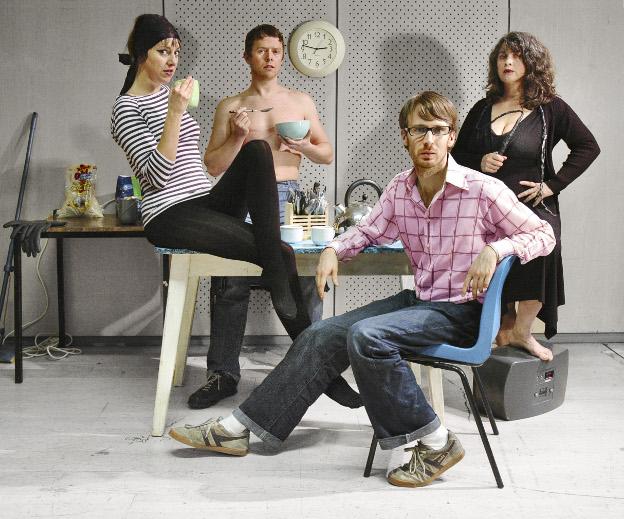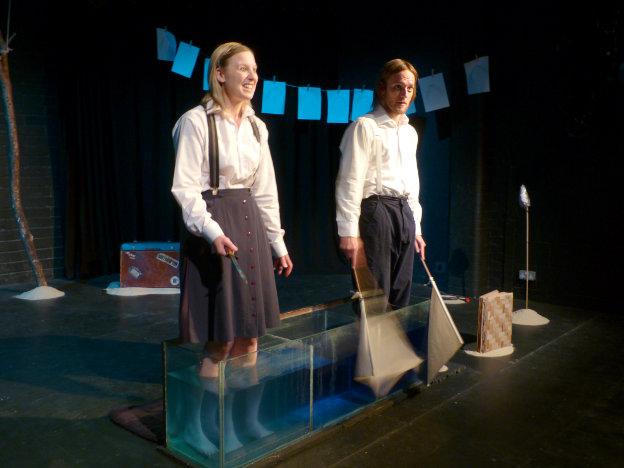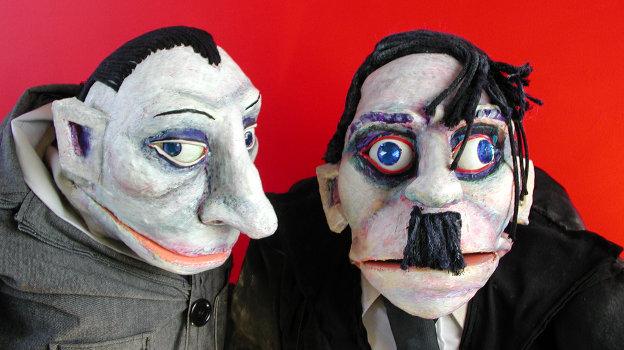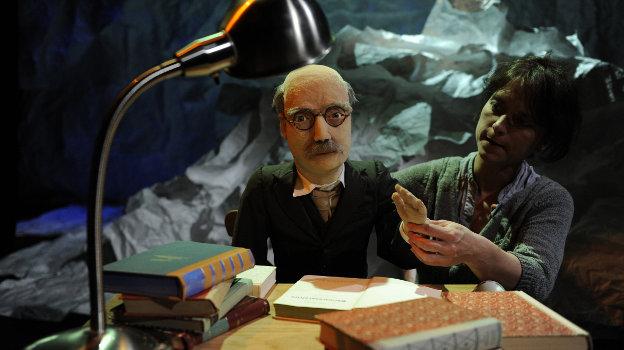Gob Squad is collective of UK and German artists who juxtapose fixed-form performance with the improvised and unpredictable. Typically their work can be found outside of a traditional theatre, exploring the corners of contemporary life, seeking absurdity and spectacle as they capture moments of exquisite humanity in our decaying urban existence.
Tonight, we are in the main theatre auditorium of the Arnolfini for a lesson that turns out to be about Gob Squad and, importantly, ourselves. After opening with a lecture preface about how there is no such thing as ‘wrong’ and how failure should be embraced, what unfolds is a work that envelops its audience in the world of this nearly 20 year-old collective – a piece as much about the process of creation as it is an active demonstration through performance. Questions circle around the projection of Self and persona on stage in a live action where we become Gob Squad.
What makes us uniquely ourselves? To be unique is an interesting concept that opens this adventure divided across explorations that question the Self. Using the concept of ‘remote lecturing’, select audience members have headphones placed on them and are invited on stage. They are told what to say, where to go and what to do. Gradually the two stage-present members of Gob Squad are replaced and the performance continues in this fashion with participants randomly choosing who from the audience will replace them on stage.
The juxtaposition between presence and absence in this adventure is exciting. To communicate through another person will always bring in a variable that cannot be predicted, but when that person is a conduit to relay another’s actions, words or perspective does this sense of interpretation reveal a truth of Being or an element of the Self unseen in the original? Strangers meet on stage: conduits for the unseen Squad. It’s a concept full of excitement as the richness of the work comes from this unknown factor, and failure in this guise would still fulfil the brimming sense of tension and anticipation that a work like this creates in its spectators. In this world, truth and fiction are indistinguishable and in that same sense we are all multiples trapped in the singular form of one body; here we’re allowed to explore the nature of who we are, the honesty in ourselves, and the lies or projected persona that we create to encapsulate ourselves or present who we are in life or on stage. As participants speak they reveal a side of of the unseen practitioner that, first-hand, could never be expressed in the same way.
The work as a whole is lovingly layered with the company members’ own moments of inspiration – be that clips of their working practice and lives, the recounting of moments of pivotal change, encounters they have experienced, or even influences from literature, music, TV and cinema where concepts of multiplicity take hold. A particularly perfect moment sees the recounting of a chance meeting between a couple that is so tenderly expressed by the two audience members that one wonders how this bitter sweetness could be retold and captured again. Yet much like its source it is a fleeting moment never to be repeated in the same way. There is a resonance that cannot be expressed, but it leaves you wanting to burst out, in much the same way that an old photo of happier times leaves one trembling to capture it again. This palpable potential for resonance is created in fleeting moments of living action, and later further enhanced with the screening of performances from the Gob Squad back-catalogue alongside the action on stage. Here an additional layer adds to the sense of mirroring, not in the predictable sense of copying, but rather once more in an ephemeral manner. A man chooses a woman from the audience, they engage in conversation, he then switches his headphones with hers and she is asked to query why he picked her. Laid bare before us are these two unique selves. Not only have Gob Squad stripped away themselves but they also have seized the opportunity to expose us too.
Tender, exciting and dangerous, Gob Squad challenge the roles of audience and performer, the nature of a company’s heritage, and who we all are at the heart of a projected persona. There is no such thing as a singular Self, and Gob Squad expose this authentic fiction superbly in an outstandingly brilliant piece.










